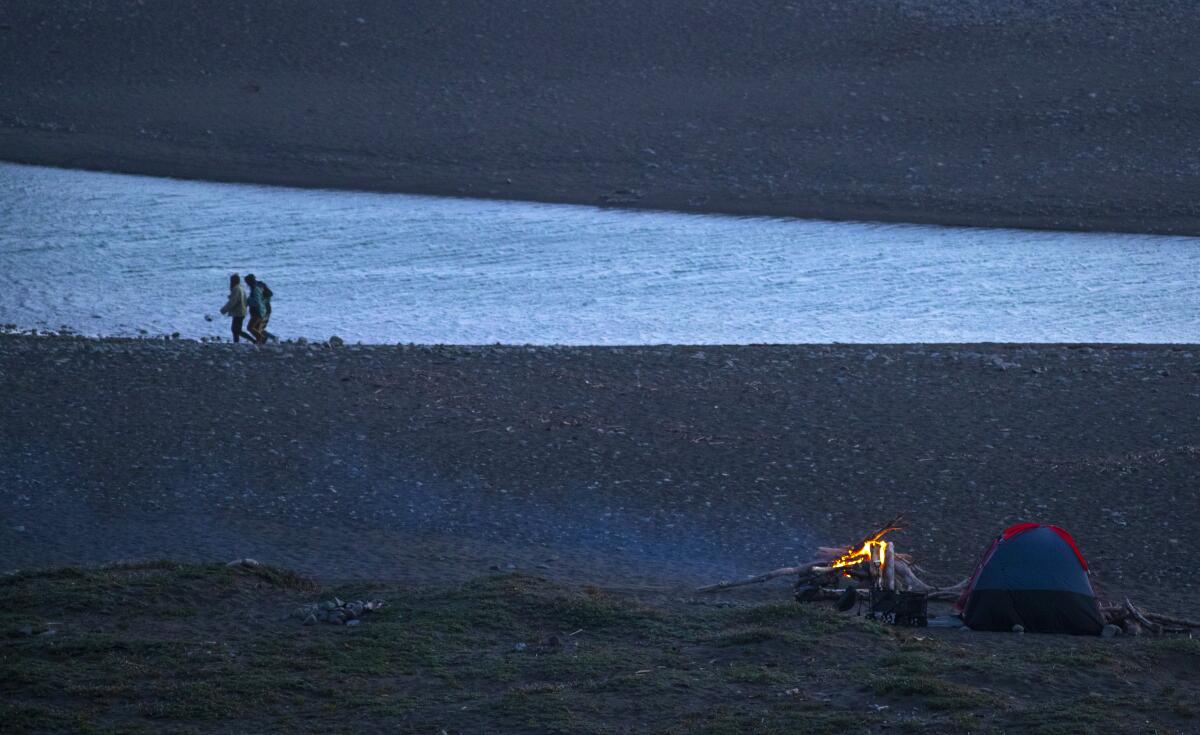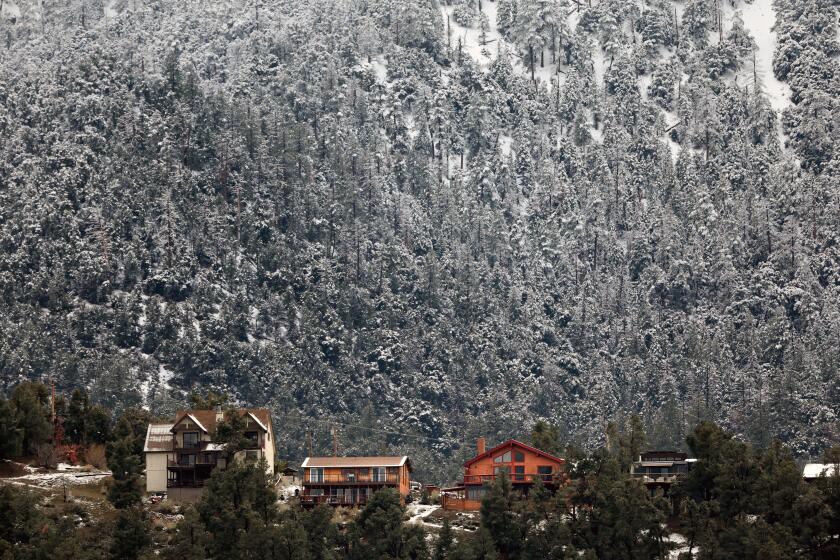Too much poop, trash and trampling of habitats shut down Big Sur’s only free camping site

- Share via
San Carpoforo Beach in California’s Los Padres National Forest offers an idyllic view of the Pacific Coast and is the only free public camping site in the Big Sur area.
The combination of beauty and exclusivity helped to make the San Luis Obispo County beach quite popular with campers — too popular, in fact. And as a consequence, overnight camping will be prohibited there for the next two years, starting in April.
In recent years, a steady stream of visitors trampled through sensitive habitats and left behind trash, human waste and illegal campfire rings, according to a staff report from the California Coastal Commission, which regulates land and water use along the coast. On Thursday, the commission voted unanimously to approve the ban at the request of the U.S. Forest Service.
During the closure, the state will “reset” conditions at the site and complete a new management plan that will identify the additional visitor amenities and tools needed to allow public access to the site again. The ban was first reported by the San Luis Obispo Tribune.
There are myriad reasons why guests want to stay at San Carpoforo Beach, a portion of which is situated in the northernmost reaches of the state-owned properties in Hearst San Simeon State Park. The beach offers the only free campsite along the entire 90 miles that make up the Big Sur shoreline.
At Pine Mountain Club in Kern County, home and vehicle break-ins by bears are a recurring source of stress, as well as community division.
Visitors to the beach are likely to spot elephant seals, black-tailed coastal deer and certainly the Western snowy plover, a small shorebird that was recognized as a threatened species in 1993 by the U.S. Fish and Wildlife Service. The beach is also home to several diverse habitats, including riparian, estuarine, coastal dune and marine.
The “lack of control over recreational activities [at San Carpoforo Beach] almost certainly has affected the snowy plover,” according to a 2019 report from the U.S. Forest Service.
Off-leash dogs, tents and humans on the beach and trash left behind that could attract predators were all factors cited by the state report as concerning for the wildlife and its habitat. Nor is the site well equipped to handle its guests — the popular beach has just a single, small pull-out parking lot off Highway 1, and it lacks public restrooms and trash cans.
State officials say they don’t have the resources to properly police and maintain the site with such a large onslaught of campers. These visitors also pose a risk when they haul driftwood to start campfires, according to the staff report, potentially upsetting the ecosystem that relies on that wood and increasing the risk for wildfires.
The beach will not be completely closed to the public, and visitors can still stop by to enjoy the sights during the two-year respite from camping, but they have to pack up and leave before the end of the day, according to the staff report.
Visitors will notice some changes in the near future, such as new trash cans and an increase in the presence of state personnel to patrol the area, steps urged by the staff report. By the end of the two-year closure, state officials should have figured out how many camping spaces are manageable, how much visitors should be fined for starting an illegal campfire, and seasonal closure schedules for certain areas at high-risk of wildfires, the report says.
More to Read
Sign up for Essential California
The most important California stories and recommendations in your inbox every morning.
You may occasionally receive promotional content from the Los Angeles Times.















